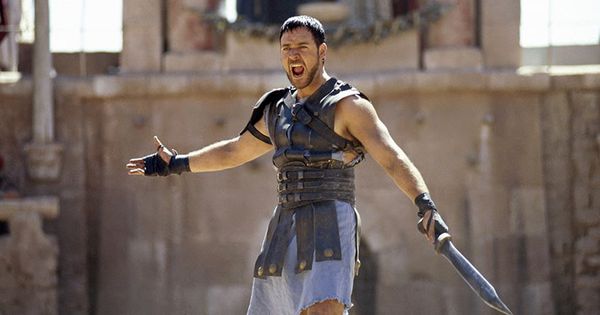Eye For Film >> Movies >> Gladiator (2000) DVD Review

Three discs, full commentaries by Ridley Scott and Russell Crowe, interviews with all the main leads and enough behind-the-camera extras to keep the geeks happy - what more could you ask for?
Even the film itself gets a makeover, with 17 minutes of added footage. Despite the new material, however, Scott insists this is not the director's cut (that would be the version most of us saw in the cinema first time around). Why these 17 minutes were added remains a mystery, however, as none of it really stands out. Bigger, yes, but in this instance not necessarily better.

Crowe describes Gladiator as a "movie about death", and there is an awful lot of death on display - from Germanic tribesmen being axed in the face to hapless gladiators being eaten alive by wild tigers - but there were limits, even in a bloodbath such as this, reveals Scott.
One of the centrepieces of the film was going to be a fight to the death between Crowe's Maximus and a two-tonne rhino. Scott storyboarded the sequence and even hired a British company to create a computer-enhanced demo of the scrap, and though the early footage looks impressive, the idea was canned. Production illustrator Sylvain Despretz says it was nixed by "someone high up" at DreamWorks who "had developed anxieties" over killing animals on screen because of an "earlier experience". He doesn't name names, but the words "Spielberg" and "Jaws" come to mind.
Despite the ethical issues, there was another compelling reason not to go ahead with the rhino killing - a budget of around $3 million. End of rhino scene.
Three million seems like small change compared to the $26 million bill the film's insurance company faced after the death of Oliver Reed halfway through the shoot. Scott and the folks at DreamWorks had to make a tough choice - hire another actor to reshoot all Reed's scenes, or rewrite the story. They went for the rewrite and in Shadows And Dust: Resurrecting Proximo, editor Pietro Scalia gives a fascinating account of the painstaking process involved in bringing Reed back to life using discarded footage, a body double and some computer wizardry.
Reed himself is even better value, and my only criticism of the extras is that there isn't more of him. On receiving the script from Scott, Reed says, his first thought was "fuck him". Not because the script wasn't up to scratch, but because it came with a note explaining it did not constitute an offer. Scott then summoned him to London for a reading. Reed objected - "I don't read for people" - but relented when he realised he could get a free trip to London out of it and the chance to "see a show".
In Tale Of The Scribes, writer David Franzoni describes how the story developed from the original idea to the final screenplay. He seems surprised the project even got the green light in the first place. "They thought we were mad," he says. "A $100 million movie about a guy who kills innocent people and animals for a living?"
The studio loved the script, but then decided to make wholesale changes. Franzoni stayed on as producer, but another writer was hired to make more changes; then British writer William Nicholson was brought in to make yet more changes. Maximus's wife and son, it was decided, would be killed off at the start of the movie and that changed the whole tone of the story. It was a clever, and profitable, move - making Maximus more than just a two-dimensional killing machine not only tightened the narrative but also won over the female box office, says Nicholson.
Reviewed on: 06 Sep 2005
















